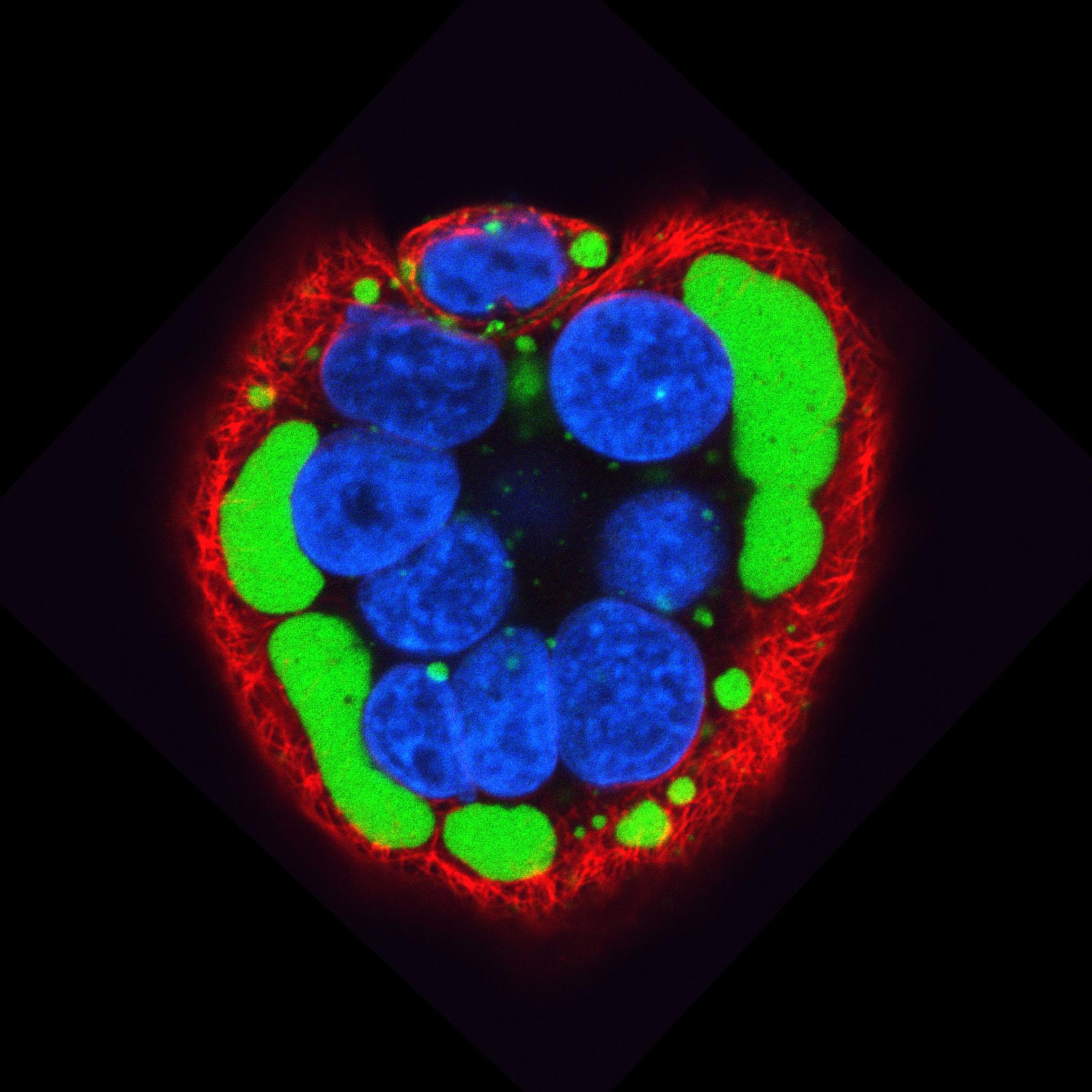Rinderpest virus expressing enhanced green fluorescent protein as a separate transcription unit retains pathogenicity for cattle
A full-length DNA clone of a virulent strain of rinderpest virus was constructed with the gene for the enhanced green fluorescent protein (eGFP) inserted as a separate transcription unit between the P and M genes. Rescue of the virus from the modified clone using reverse genetics generated a virus that grew to the same levels as the virus rescued from the unmodified DNA clone in cell culture. The recombinant virus expressed eGFP to a high level and was used to follow virus replication in real-time using live-cell imaging. Cattle infected with both the recombinant wild-type virus and the recombinant eGFP expressing virus developed clinical disease similar to that of the wild-type natural virus isolate. Detection of virus in circulating peripheral blood leukocytes was equivalent to that of the animals infected with the wild-type virus. The high level of expression of soluble eGFP by this virus allowed us to detect viral replication in infected animals by confocal microscopy. Imaging vibrating microtome sections by confocal microscopy provided good preservation of tissue and cellular architecture as well as revealing the sites of replication of the virus in different tissues of infected animals.
Back to publications
